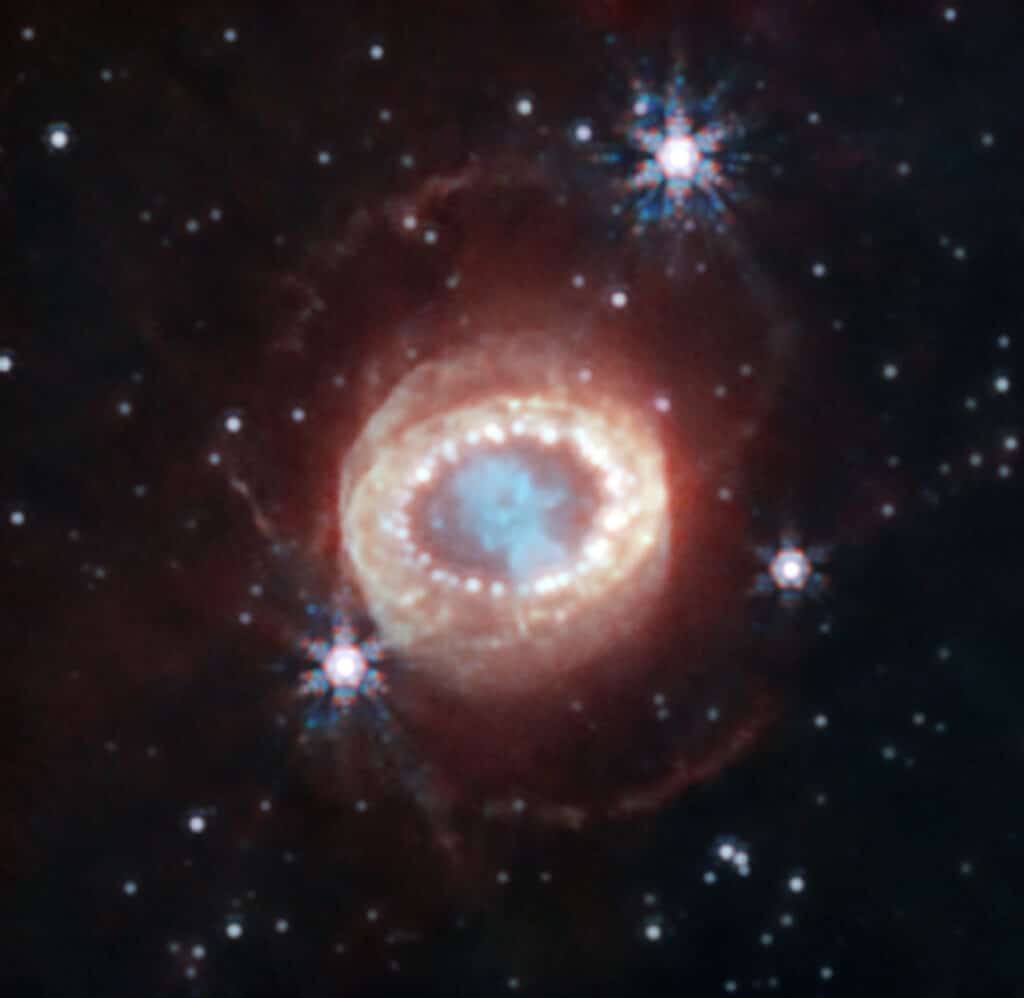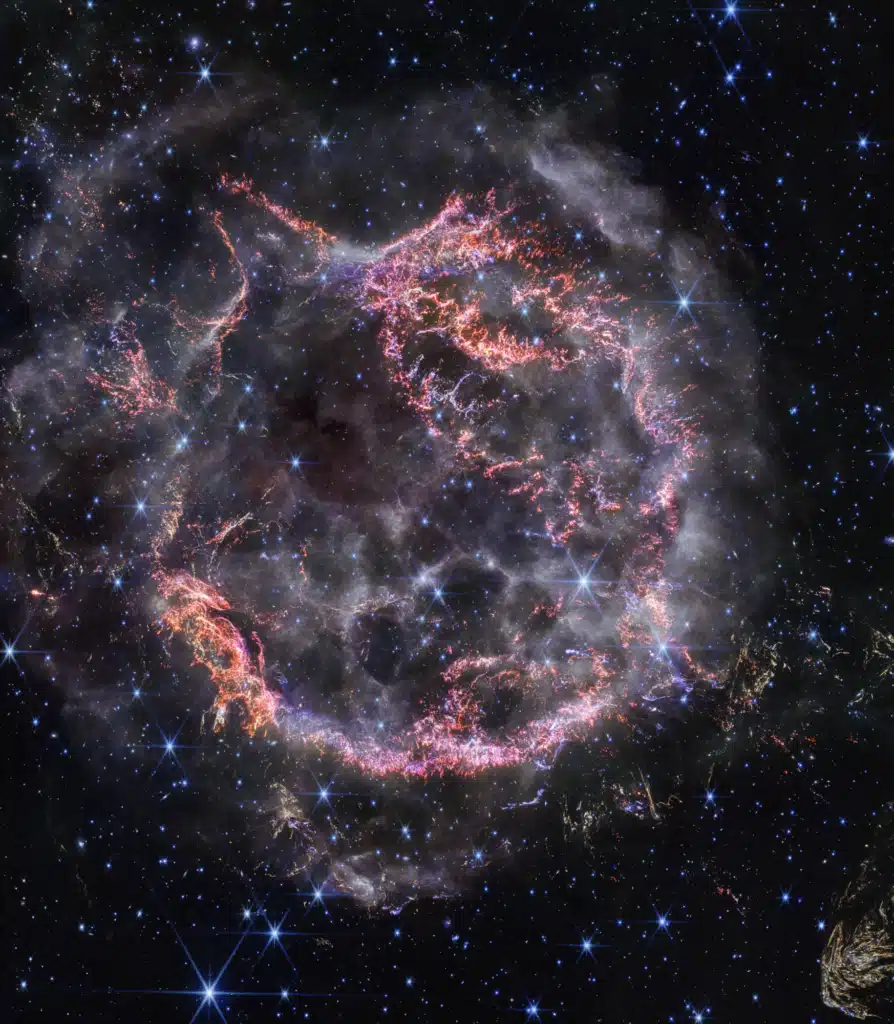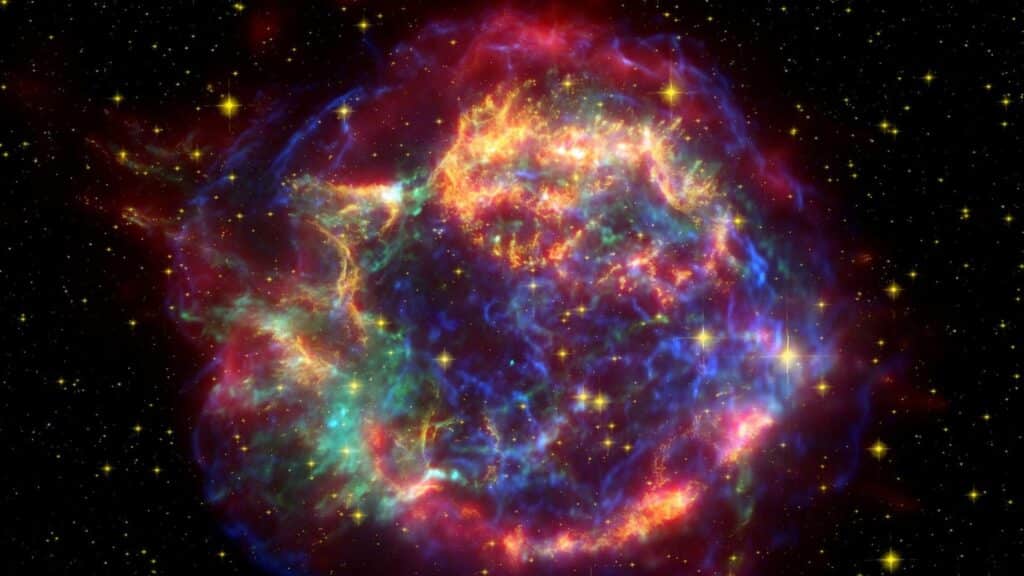Imagine you’re a cosmic detective, trying to piece together the life story of a tiny speck of stardust. This is the challenge that a team of scientists from Curtin University in Australia took on when they discovered a truly remarkable presolar olivine grain within the ALH 77307 meteorite.
Presolar grains are tiny time capsules, preserving a record of the stars that existed before our solar system was born. Each grain is a snapshot of a single moment in a star’s life, offering clues about the physical and chemical processes that shaped our universe.

The grain in question, dubbed N-AL6, was found to have the highest magnesium-25 (25Mg) isotopic composition ever measured in a silicate. Isotopes are different forms of an element with varying numbers of neutrons, and their ratios can tell us a lot about the conditions under which a grain formed.
N-AL6’s extreme 25Mg excess is a bit like finding a fingerprint at a crime scene — it’s a key piece of evidence that can help us trace the grain’s origin. Researchers used advanced techniques like nanoscale secondary ion mass spectrometry (NanoSIMS) and atom probe tomography (APT) to analyze the grain’s isotopic and elemental composition in unprecedented detail.
Here’s where the cosmic detective work really gets interesting. By comparing N-AL6’s isotopic signatures with those predicted by different stellar models, Curtin researchers concluded that the grain likely formed in a supernova where hydrogen ingestion occurred in the pre-supernova phase. This is a relatively new idea in astrophysics — that a dying star can “ingest” hydrogen from its outer layers just before it explodes.
The process of hydrogen ingestion can drastically alter the chemical and isotopic composition of the material ejected by the supernova. In N-AL6’s case, it led to a dramatic enrichment in 25Mg, which is produced by the capture of protons (hydrogen nuclei) by magnesium-24.
“These particles are like celestial time capsules, providing a snapshot into the life of their parent star,” says lead study author Dr. Nicole Nevill, who now works at the Lunar and Planetary Science Institute, in a media release.
“Material created in our solar system have predictable ratios of isotopes — variants of elements with different numbers of neutrons. The particle that we analyzed has a ratio of magnesium isotopes that is distinct from anything in our solar system.”
But the story doesn’t end there. Researchers also found that N-AL6 has an unusually simple chemical composition, consisting almost entirely of magnesium, silicon, and oxygen. This suggests that the grain condensed under very specific conditions, either in a pocket of gas that was depleted in other elements, or in a rapidly cooling environment that didn’t allow for more complex chemistry.
Putting all these clues together, scientists paint a picture of N-AL6’s birth in the tumultuous final moments of a massive star’s life. As the star’s core collapsed, triggering a supernova explosion, pockets of gas with unique chemical compositions may have formed in the ejected material. It was in one of these pockets that N-AL6 likely crystallized, preserving its distinctive isotopic and elemental fingerprint.
“The atom probe has given us a whole level of detail that we haven’t been able to access in previous studies,” explains Dr. David Saxey, from the John de Laeter Center at Curtin.
“Hydrogen burning supernova is a type of star that has only been discovered recently, around the same time as we were analyzing the tiny dust particle. The use of the atom probe in this study, gives a new level of detail helping us understand how these stars formed.”

This research is more than just a fascinating cosmic detective story. Presolar grains like N-AL6 are among the oldest solid materials in our solar system, and studying them can help us understand the stardust that was swirling around when our sun and planets formed. Every new grain analyzed adds another piece to the puzzle of our cosmic origins.
In a sense, each presolar grain is a message in a bottle, sent across billions of years from the stars that created the elements that make up our world. By deciphering these messages, we’re not just learning about the lifecycle of stars — we’re tracing our own cosmic genealogy, written in the ashes of ancient suns. As we continue to search for and analyze these stellar fossils, we inch closer to understanding our place in the grand story of the universe.












